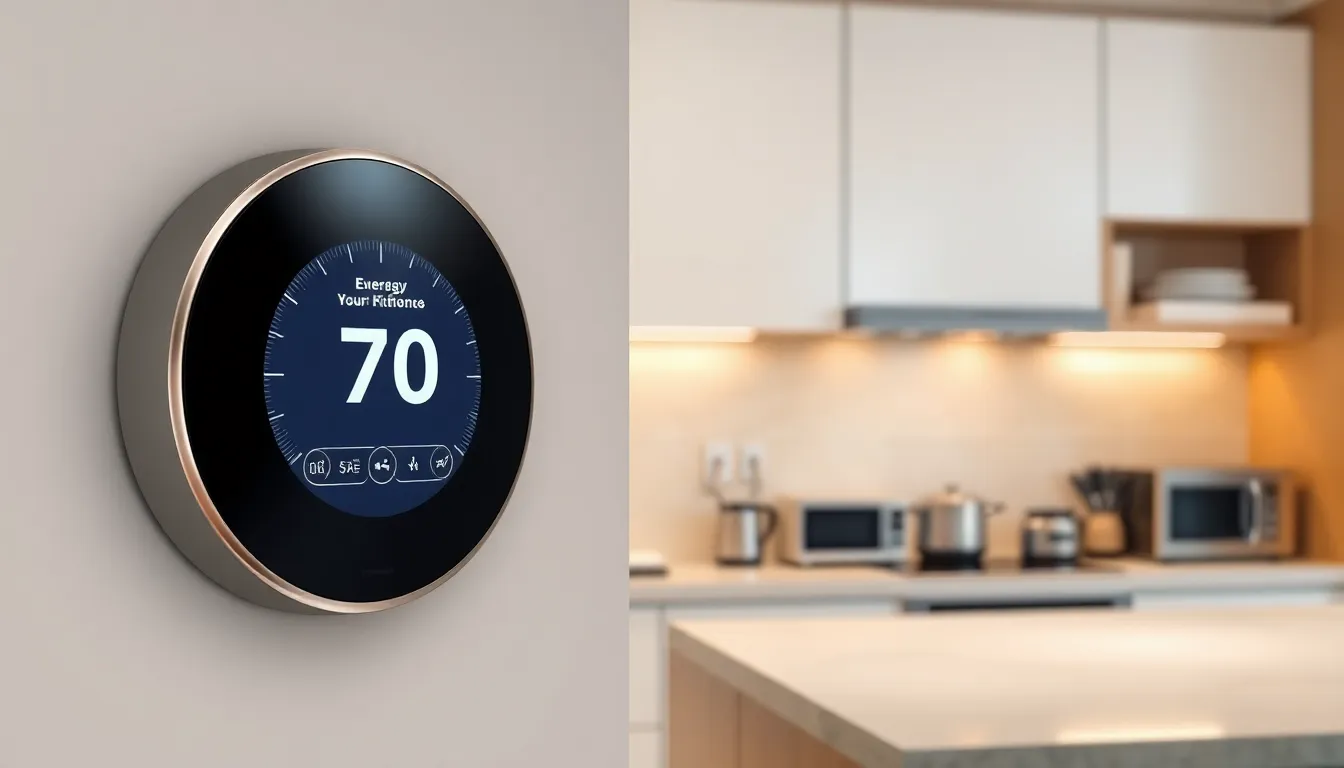In a world where your fridge can remind you to buy milk and your thermostat knows when you’re cold, the marriage of AI and IoT is like peanut butter and jelly—if peanut butter could think for itself. This dynamic duo is revolutionizing everyday life, making homes smarter and businesses more efficient.
Table of Contents
ToggleOverview of AI and IoT
Artificial Intelligence (AI) and the Internet of Things (IoT) form a synergistic relationship that enhances various aspects of daily life. This combination introduces smarter homes and promotes increased efficiency in business operations. AI processes data generated by IoT devices and provides insights that drive informed decision-making.
IoT devices, such as smart thermostats and security cameras, collect real-time data. This data, when analyzed by AI algorithms, leads to improved automation. An example includes a smart thermostat that learns user preferences and adjusts accordingly to optimize energy consumption.
Businesses benefit significantly from AI and IoT integration. Supply chain management sees enhancements through predictive analytics. For instance, AI can forecast inventory needs based on IoT sensors that track stock levels.
This partnership facilitates seamless communication between devices. Smart appliances can notify users about maintenance needs or energy usage through connected apps. As a result, individuals can manage household functions efficiently.
Innovation thrives in sectors like healthcare. Wearable devices monitor patient vitals and utilize AI to alert medical professionals of concerning trends. Such advancements enable proactive care, enhancing patient outcomes.
The future of AI and IoT promises even greater potential. Continued advancements will likely lead to even smarter applications, shaping how people interact with the world. Businesses aiming for increased competitiveness can leverage these technologies for transformative results.
Impact of AI on IoT

AI significantly enhances the capability of IoT devices by providing smarter data processing and improved efficiency across various applications.
Enhanced Data Processing
AI algorithms analyze vast amounts of real-time data collected from IoT devices. They identify patterns and trends that humans might overlook. Smart thermostats exemplify this process by learning user preferences over time, which leads to energy savings. In addition, AI’s ability to interpret complex datasets allows for quicker decision-making in critical scenarios. As a result, companies can leverage insights to optimize operations and customer experiences effectively. With continuous advancements, the synergy between AI and IoT will only strengthen, leading to more sophisticated data utilization.
Improved Efficiency
AI integration streamlines operations in businesses by facilitating automation. IoT devices such as smart sensors track equipment performance, while AI analyzes this information for maintenance scheduling. Enhanced predictive analytics allows businesses to manage supply chains fluidly, reducing excess inventory and lowering costs. Communication between devices improves, enabling smart appliances to adjust automatically based on user behavior. Furthermore, this partnership fosters innovation in sectors like healthcare, where wearables prompt medical alerts for trend deviations. Improved efficiency through AI’s analysis promotes productivity and strategic growth across industries.
Challenges in Integrating AI and IoT
Integrating AI and IoT presents several challenges that require careful consideration.
Security Concerns
Security remains a primary concern when deploying AI and IoT solutions. Cyber attacks targeting connected devices can jeopardize sensitive data and disrupt operations. Many IoT devices lack robust security protocols, making them vulnerable entry points for hackers. Effective encryption methods help mitigate risks, yet implementing these safeguards across thousands of devices poses logistical challenges. Organizations must adopt a multi-layered security approach, incorporating threat detection systems and regular software updates. Security best practices also include employee training on phishing and social engineering tactics, which often exploit human vulnerabilities. By prioritizing security measures, businesses can protect their systems and data from potential threats.
Data Privacy Issues
Data privacy issues arise when AI processes vast amounts of personal information. IoT devices collect sensitive data that, when analyzed, can reveal an individual’s habits and preferences. Ensuring compliance with regulations like GDPR necessitates transparent data management practices. Organizations face the challenge of balancing data collection with user consent and rights. Data anonymization techniques enhance privacy, yet they sometimes limit the effectiveness of AI algorithms. Implementing strong data governance policies safeguards user data while enabling beneficial insights through AI. Effective data management fosters trust among users, resulting in a healthier relationship between companies and consumers.
Future Trends in AI and IoT
The future of AI and IoT holds immense potential for innovation and efficiency. Enhanced interconnectivity among devices and smarter algorithms will drive this transformation.
Growth of Smart Devices
Smart devices increasingly populate homes and businesses, enhancing user convenience. Statista reports there are over 30 billion connected devices globally, a number projected to exceed 75 billion by 2025. This rapid growth presents opportunities for advanced integrations. Home automation systems, including lights, locks, and appliances, allow seamless control through AI-driven platforms. Manufacturers continually innovate, focusing on energy efficiency and user interfaces. Each new generation of devices incorporates improved sensors and connectivity features, leading to a more integrated ecosystem. As consumers demand smarter solutions, companies respond by developing multifunctional products that adapt to user preferences.
Evolution of AI Algorithms
AI algorithms evolve rapidly, significantly impacting IoT applications. Many new algorithms leverage machine learning and deep learning techniques to enhance data processing. Such advancements allow for real-time analysis of massive data sets from IoT devices. According to McKinsey, the adoption of AI technologies can boost productivity by up to 40%. Enhanced predictive capabilities result from these algorithms, leading to smarter automation and decision-making. Algorithms now focus on edge computing, where data processing occurs closer to the source, reducing latency. This shift enables faster responses for applications like autonomous vehicles and health monitoring systems. Innovations in AI will continue driving the efficiency of IoT ecosystems, fostering more intelligent and responsive networks.
The integration of AI and IoT is reshaping how individuals and businesses operate. This powerful combination not only enhances efficiency but also enriches everyday experiences. As technology continues to evolve the potential for smarter and more connected environments grows.
Addressing challenges like security and data privacy will be essential in maintaining trust and ensuring that these innovations benefit all users. With continuous advancements in AI algorithms and the proliferation of smart devices the future holds exciting possibilities.
The journey towards a fully integrated AI and IoT landscape promises to unlock unprecedented levels of automation and insight. Embracing this evolution will lead to smarter solutions that enhance productivity and improve quality of life across various sectors.




